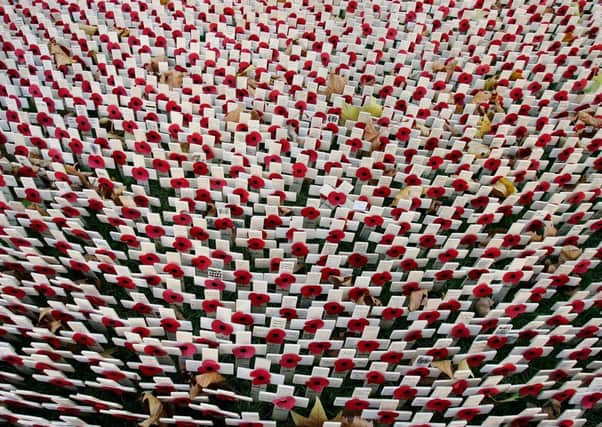Beyond the rituals of remembrance


A CENTURY on from the outbreak of The Great War, educators across the UK are facing up to the challenges posed by the commemoration of one of the deadliest conflicts in human history. The importance of making something of such historical significance “relevant” to a generation for whom lived experience is increasingly inaccessible cannot be overstated. With the death of Harry Patch in 2011, the living connection between our generation and those countless lost to the conflict was severed; remembrance ceased being a calling to memory, and moved towards more abstract rituals of observance.
The civic case for observing the sacrifice of the millions lost on either side of the conflict is unarguable. Binyon’s immortal lines from 1914 crystallised the commitment of all beneficiaries toward their fallen countrymen: “At the going down of the sun, and in the morning, we will remember them.” Undoubtedly there will come a time when “the war to end all wars” occupies less lofty terrain in the common consciousness; but as long as cenotaphs continue to be decorated, poppies worn and the Last Post played there will be, at the very least, regular moments of formal remembrance.
Advertisement
Hide AdAdvertisement
Hide AdFrom an educational perspective, however, we should aspire to something more meaningful than ritualised performances of memorial. Few weeks go by without the “national day of” something clamouring for the increasingly monopolised attention of our learners. How can this particular anniversary be presented and marked in a manner that is both commensurate with its global importance and genuinely engaging for children of all ages? Viewing this as an opportunity rather than an obligation is a good starting point for the opening up of a professional dialogue around the various means by which subjects can be brought together to promote thoughtful reflection on a truly unique moment in human history.
Who, for example, knew that cryptographers were as important during the First World War as they were in the Second, and that without the sticky experience of ciphers being broken by two separate branches of military intelligence there would have been no Bletchley Park? Code-breaking in mathematics classes, therefore, has been planned into lesson starters and table work over the next term, and promises to be every bit as fun as it is educational.
Likewise, debates around the definition of a “just” war underpin discussions in history and modern studies, and child soldiers continue to inspire impassioned campaigning on 12 February each year for Red Hand Day.
English and drama classes can draw on a rich seam of literature that came out of the war. In a school that is home to pupils from across the globe, it is important that international sensibilities are borne in mind, and the teaching both of the German perspective in All Quiet on the Western Front and the British in Journey’s End enable students to understand shared experiences of global conflict and the ubiquity of common values. The first cases of shell shock were identified and treated during the First World War, and students visiting the Craiglockhart Hospital exhibition in what is now Edinburgh Napier University will be able to see the work of Sassoon and Owen, whose verses bring classrooms to silence even now.
Students in food technology can experience the challenge of cooking and eating from mess tins, using non-perishable and easily transportable ingredients; students in music can sing the songs from which soldiers on all sides took consolation; students in science can consider the impact of vaccines, plastic surgery and blood banks developed as a direct consequence of problems overcome in the trenches. Visits to the school by lecturers and authors, and whole-school cinema screenings of films such as All Quiet on the Western Front, A Very Long Engagement and Private Peaceful will bring together students of all ages outside the classroom and give them different perspectives on a broader theme.
In addition to the longer-term strategies for engaging students in the classroom, it was decided that a one-off “event” would enable all of these things to be brought together to consolidate their learning with a range of activities and showpieces. Local residents and primary schools will be able to watch pigeons delivering messages, join in songs from the front line, watch dramatic re-enactments of scenes from the dug-out and try wartime recipes such as “bully beef”. Therefore, on Friday, 23 January, our students will come together for a day of active remembrance and memorial at Kilgraston that goes far beyond simple acts to mark the anniversary of war.
By actively participating in a cross-curricular series of events and activities, the whole school community will come together to recognise the sacrifices made by so many. By recognising both the challenges and the opportunities associated with marking this anniversary, we are able to engage our pupils in a way that cultivates a thoughtful and genuine reflection on an event that changed the world.
• Tim Kearns is head of English at Kilgraston School